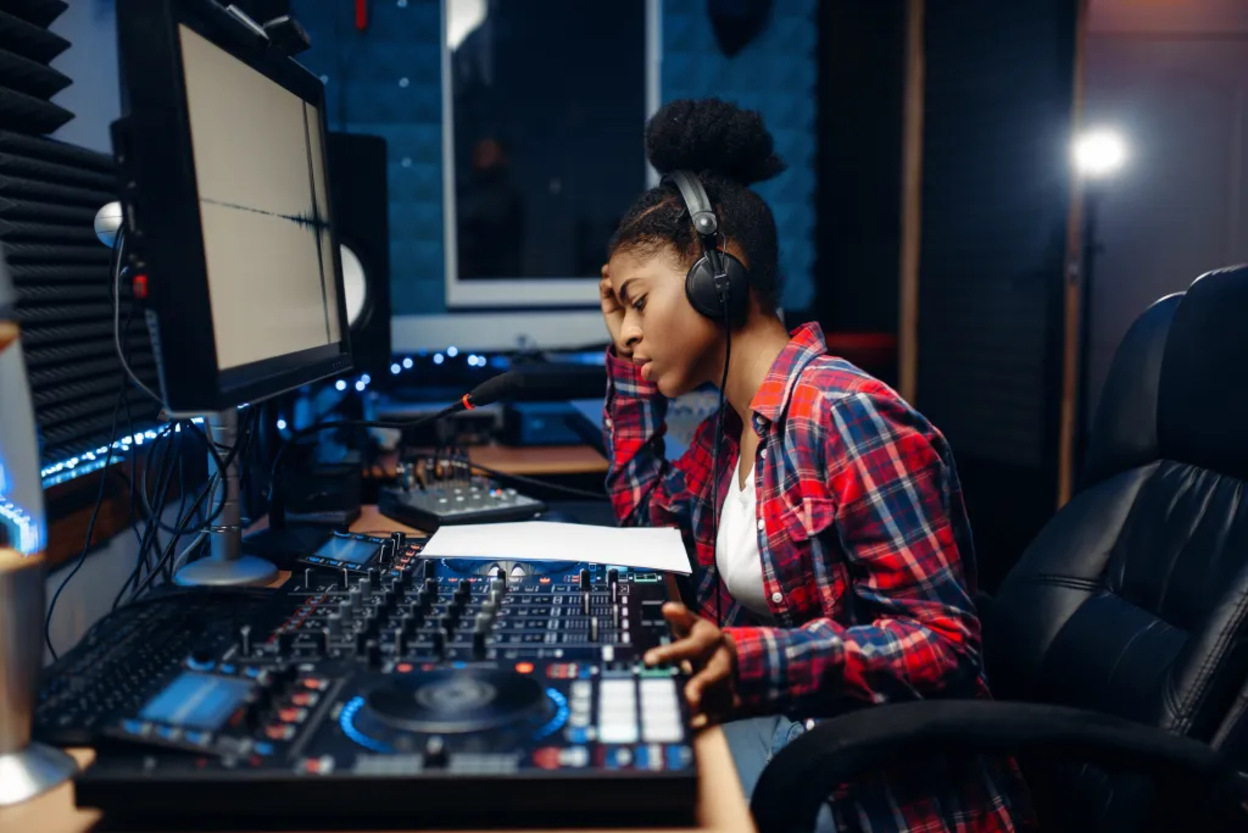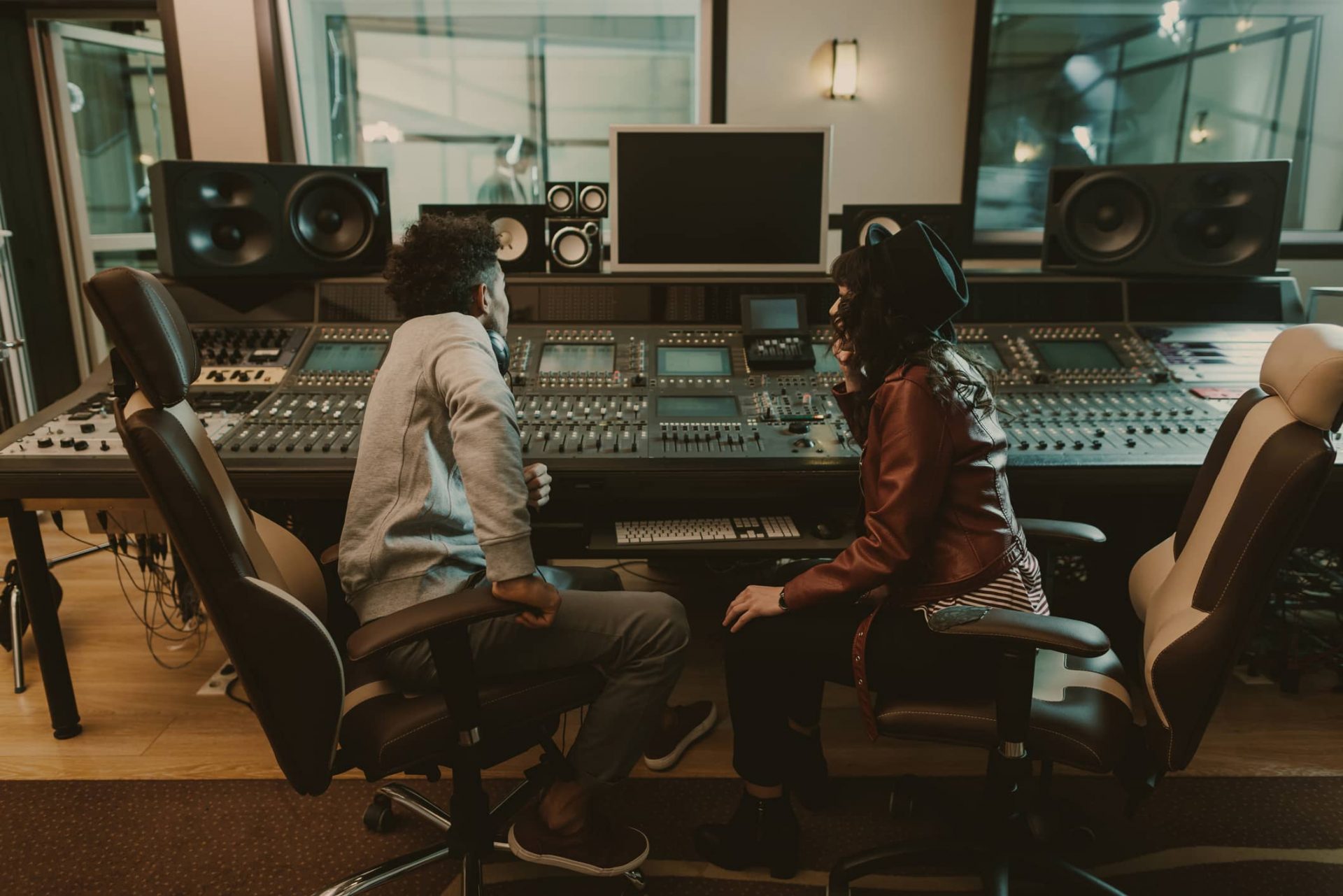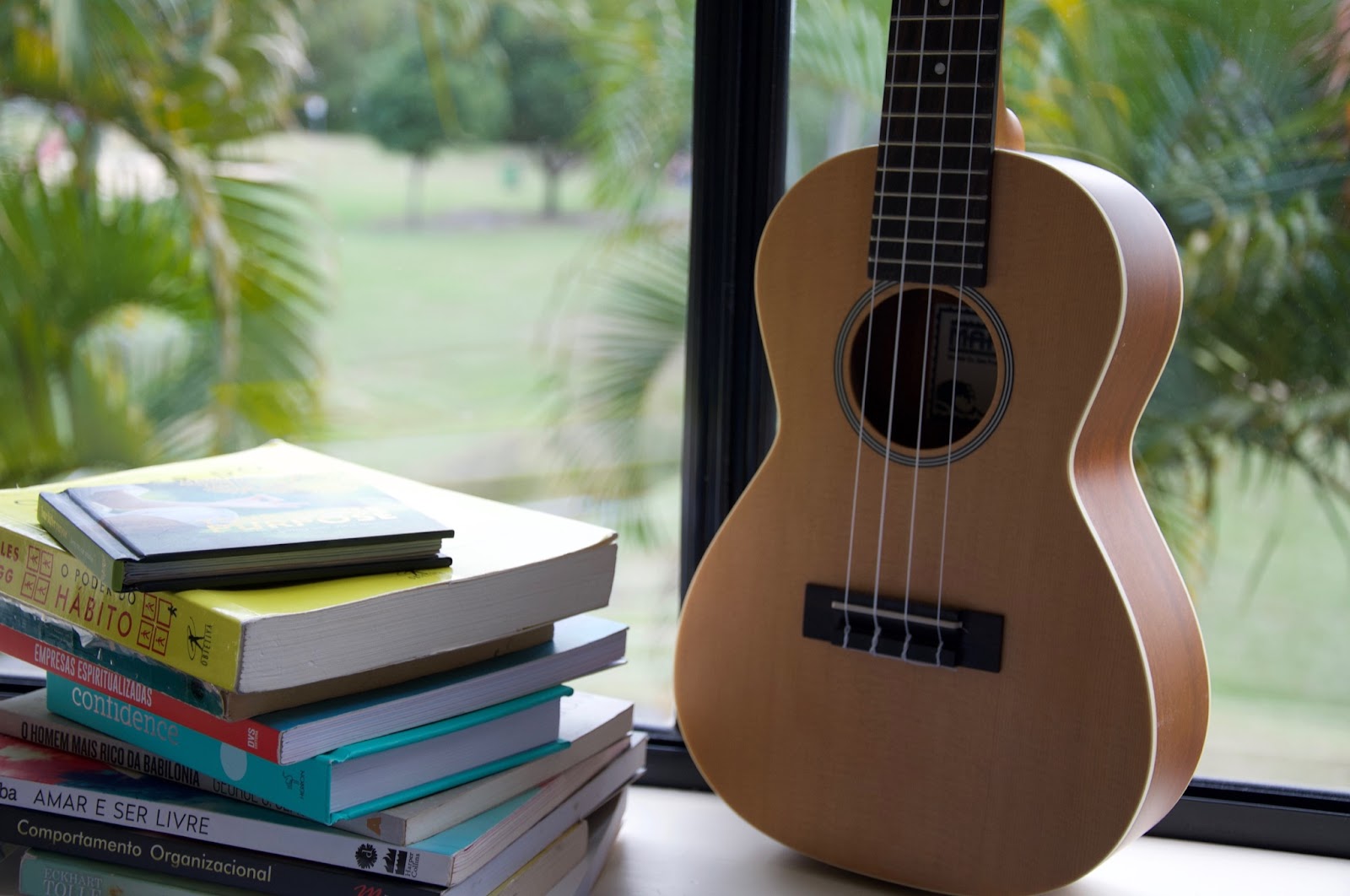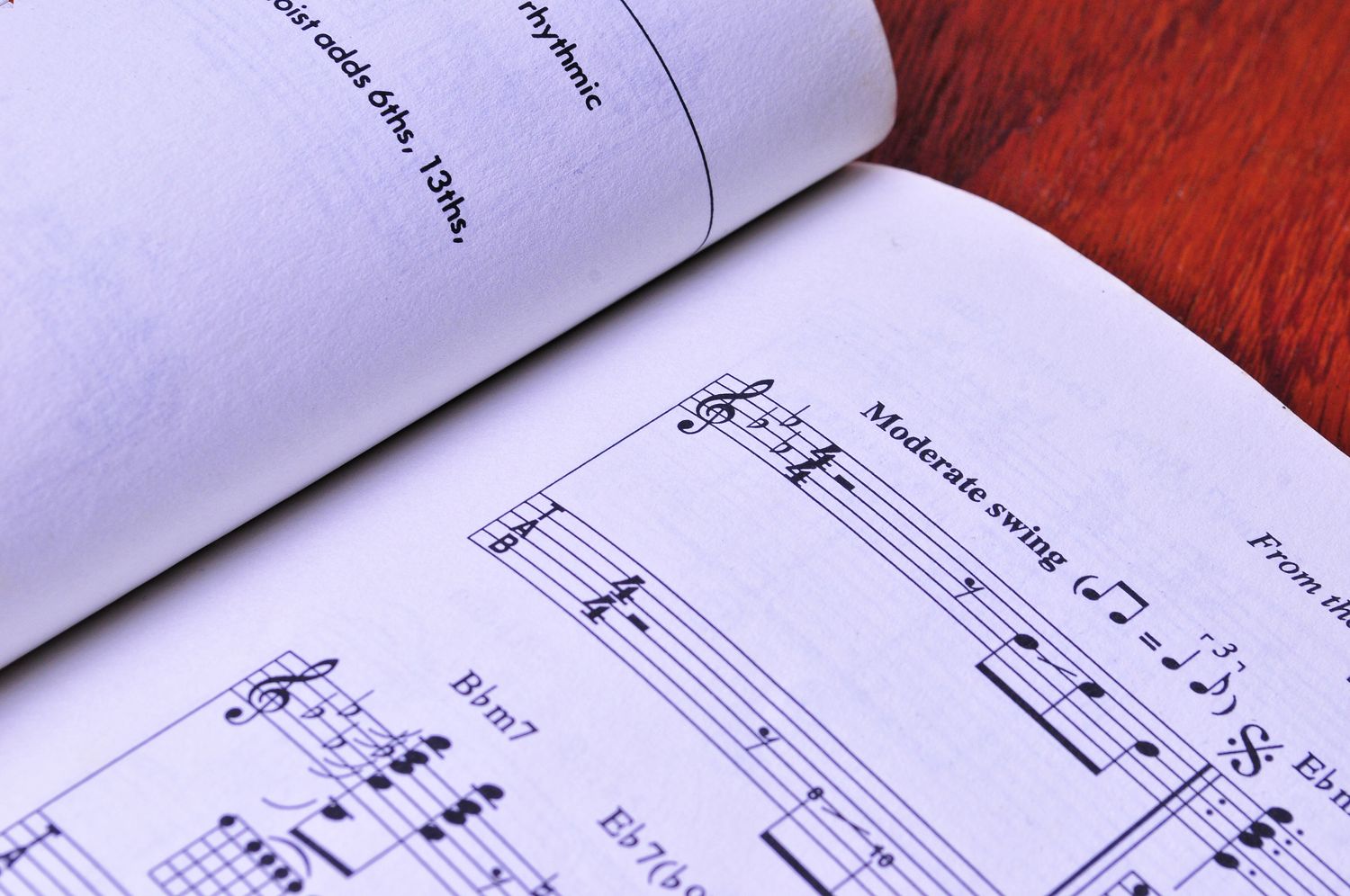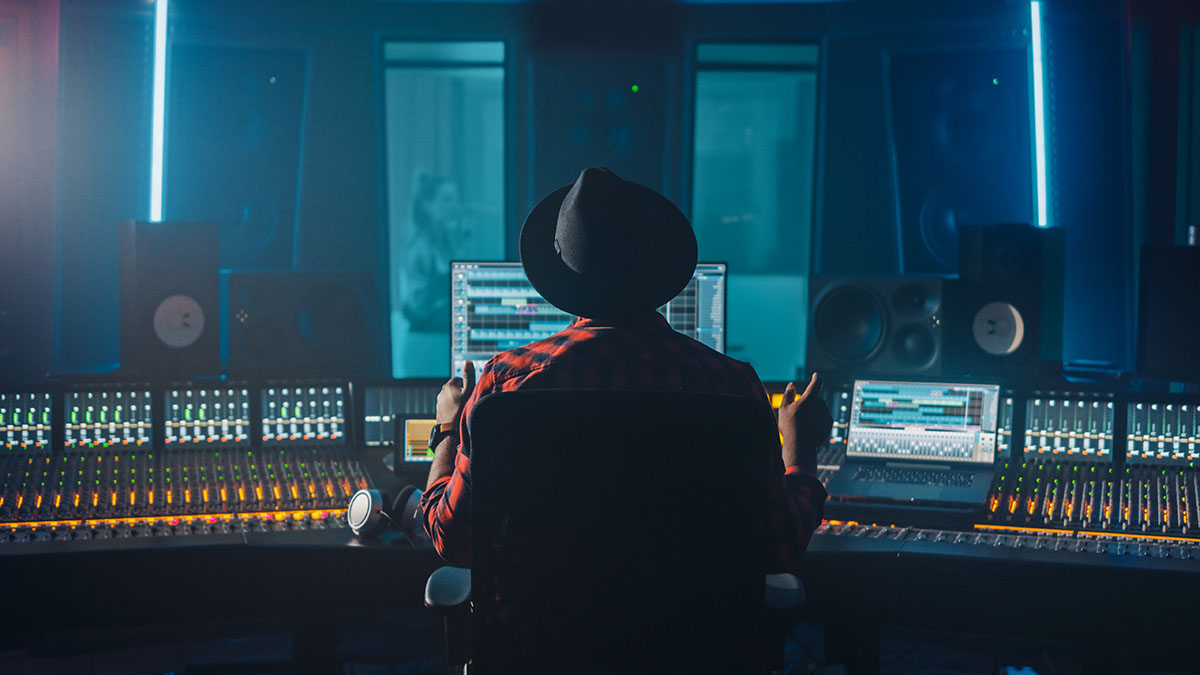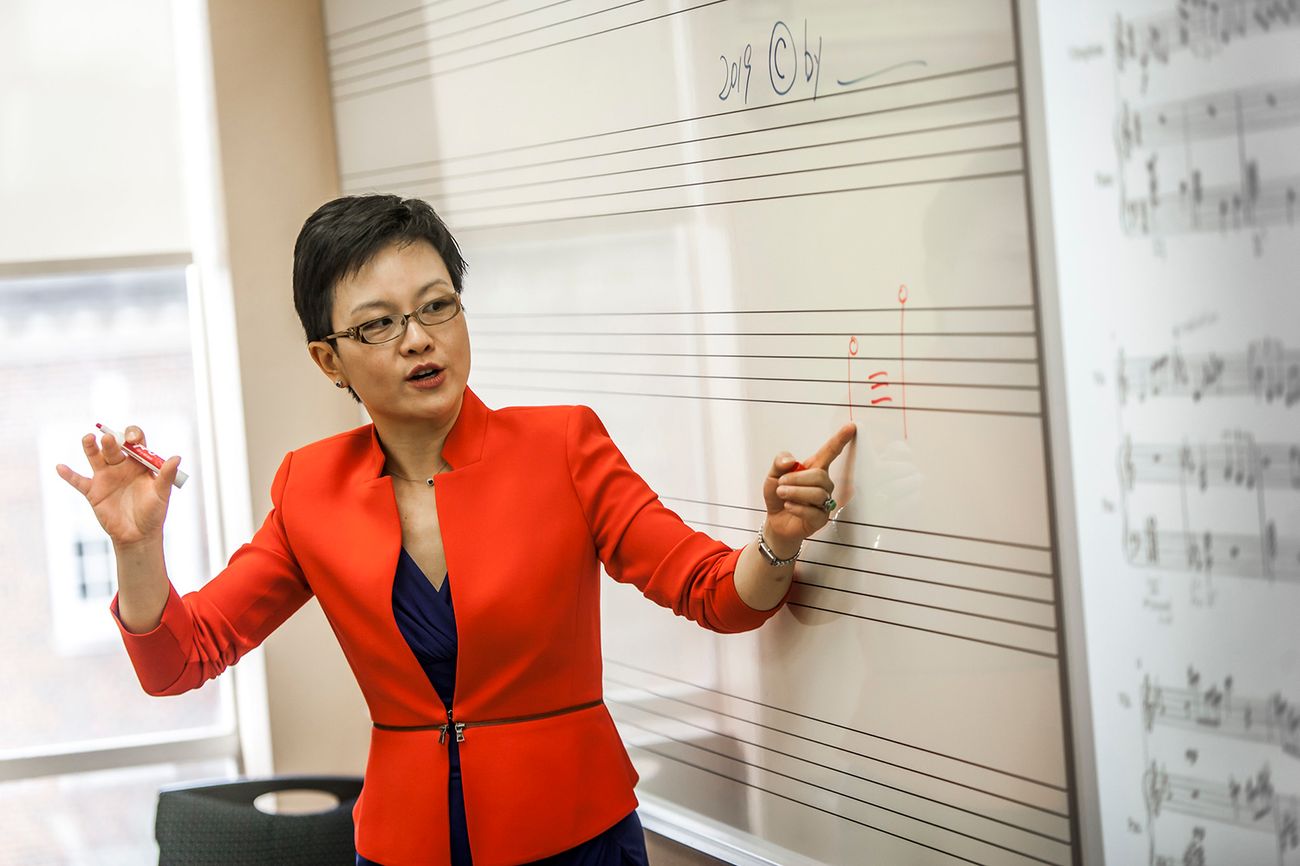Home>Production & Technology>Producer>How To Become A Self-Taught Music Producer


Producer
How To Become A Self-Taught Music Producer
Published: March 6, 2024
Learn how to become a self-taught music producer and master the art of creating your own beats and tracks. Discover the essential skills and resources you need to succeed in the music production industry.
(Many of the links in this article redirect to a specific reviewed product. Your purchase of these products through affiliate links helps to generate commission for AudioLover.com, at no extra cost. Learn more)
Table of Contents
- Introduction
- Setting Goals and Objectives
- Learning the Basics of Music Theory
- Understanding Digital Audio Workstations (DAWs)
- Exploring Sound Design and Synthesis
- Sampling and Beat Making
- Mixing and Mastering Techniques
- Building a Portfolio and Networking
- Seeking Feedback and Continuous Improvement
- Conclusion
Introduction
Becoming a self-taught music producer is an exciting journey that offers endless possibilities for creative expression and professional growth. In today's digital age, aspiring producers have access to a wealth of resources and tools that empower them to learn the art and science of music production independently. Whether you're passionate about crafting infectious beats, sculpting captivating melodies, or engineering sonic landscapes that resonate with listeners, embarking on the path of self-taught music production can be immensely rewarding.
As a self-taught music producer, you have the freedom to explore diverse genres, experiment with cutting-edge production techniques, and develop a unique sonic identity that reflects your artistic vision. With dedication, perseverance, and a thirst for knowledge, you can unlock your potential and carve out a fulfilling career in the dynamic world of music production.
Throughout this comprehensive guide, we will delve into the essential steps and strategies for aspiring self-taught music producers. From mastering the fundamentals of music theory to harnessing the power of digital audio workstations (DAWs) and honing your mixing and mastering skills, each stage of the journey will be illuminated with actionable insights and practical advice. Moreover, we will explore the importance of building a compelling portfolio, seeking constructive feedback, and cultivating a strong network within the music industry.
Whether you dream of producing chart-topping hits, composing evocative soundtracks, or shaping the next wave of groundbreaking music, this guide will serve as your compass, guiding you through the exhilarating terrain of self-taught music production. Embrace the boundless opportunities that await, and let your passion for music fuel your quest to become a proficient and innovative music producer. Together, let's embark on this transformative odyssey and unlock the extraordinary potential that resides within you.
Setting Goals and Objectives
Setting clear and achievable goals is the foundational step in your journey as a self-taught music producer. By defining your objectives, you establish a roadmap that will guide your learning process and professional development. Begin by envisioning your ultimate aspirations as a music producer. Do you aspire to produce music for renowned artists, create captivating soundscapes for films and video games, or establish your own record label? Identifying your long-term ambitions will provide a sense of purpose and direction as you navigate the multifaceted realm of music production.
In addition to long-term goals, it's crucial to set short-term objectives that align with your overarching vision. These objectives could encompass learning specific production techniques, mastering the functionality of a particular digital audio workstation (DAW), or completing a certain number of original compositions within a defined timeframe. By breaking down your aspirations into manageable milestones, you can maintain a sense of progress and momentum in your journey.
Moreover, consider the skills and knowledge areas you need to cultivate to achieve your goals. Whether it's gaining proficiency in music theory, honing your sound design capabilities, or mastering the intricacies of mixing and mastering, delineating these areas of focus will enable you to tailor your learning efforts effectively. Embrace a growth mindset and be open to exploring new genres, production styles, and technological advancements to expand your creative horizons.
Furthermore, it's essential to imbue your goals with specificity and measurability. Instead of setting vague objectives such as "improve music production skills," strive to establish concrete targets like "compose and produce three original tracks showcasing diverse instrumentation and arrangement techniques" or "acquire advanced knowledge of synthesis and sound manipulation within six months." This approach will provide clarity and accountability, empowering you to track your progress and celebrate each milestone achieved.
Ultimately, setting well-defined goals and objectives will instill a sense of purpose, motivation, and direction in your pursuit of becoming a proficient self-taught music producer. Embrace the transformative power of goal-setting as you embark on this exhilarating odyssey, and let your aspirations propel you toward realizing your full potential in the dynamic world of music production.
Learning the Basics of Music Theory
Acquiring a solid foundation in music theory is a pivotal step for any aspiring self-taught music producer. Music theory serves as the language of music, providing a framework for understanding the fundamental elements that shape musical compositions. By delving into the intricacies of music theory, you will gain invaluable insights into melody, harmony, rhythm, and structure, enabling you to craft compositions that resonate with depth and coherence.
Begin your exploration of music theory by familiarizing yourself with essential concepts such as scales, intervals, chords, and rhythm. Understanding the structure and tonal relationships of different scales, including major, minor, and modal scales, will empower you to create melodic motifs and harmonic progressions that evoke specific emotions and moods. Moreover, grasping the significance of intervals and chords will enrich your compositional palette, allowing you to craft compelling harmonies and chord progressions that imbue your music with depth and resonance.
Furthermore, delve into the realm of rhythm and meter, as they form the rhythmic foundation of musical compositions. By studying rhythmic notation, time signatures, and rhythmic patterns, you will develop a keen sense of rhythmic interplay and syncopation, enhancing the dynamism and groove of your productions.
In addition to theoretical study, practical application is key to internalizing and mastering music theory concepts. Experiment with applying theoretical knowledge to your own compositions, whether it involves creating melodic variations, harmonizing chord progressions, or crafting rhythmic motifs. Embrace the iterative process of composing and refining, allowing your understanding of music theory to inform and elevate your creative endeavors.
Moreover, leverage the abundance of online resources, tutorials, and interactive tools that facilitate immersive learning experiences in music theory. Engage with virtual keyboard interfaces, ear training exercises, and interactive theory lessons to reinforce your understanding and fluency in music theory concepts.
Ultimately, mastering the basics of music theory will equip you with a profound understanding of the underlying principles that govern musical expression. By immersing yourself in the rich tapestry of music theory, you will cultivate a discerning ear, a nuanced compositional sensibility, and a profound appreciation for the art of music production. Embrace the transformative power of music theory as a cornerstone of your journey toward becoming a proficient and innovative self-taught music producer.
Understanding Digital Audio Workstations (DAWs)
Digital Audio Workstations (DAWs) serve as the creative hub and sonic laboratory for music producers, offering a versatile and intuitive platform for composing, recording, editing, and mixing musical arrangements. As an aspiring self-taught music producer, developing a comprehensive understanding of DAWs is paramount to harnessing the full potential of your creative endeavors.
Upon venturing into the realm of DAWs, you will encounter a diverse array of software options, each with its unique interface, feature set, and workflow. It's essential to conduct thorough research and experimentation to identify a DAW that aligns with your production preferences, musical style, and technical proficiency. Popular DAWs such as Ableton Live, Logic Pro, FL Studio, and Pro Tools offer a spectrum of tools and capabilities tailored to different production workflows and creative objectives.
Once you've selected a DAW that resonates with your artistic vision, immerse yourself in its functionalities and workflow intricacies. Familiarize yourself with essential features such as audio and MIDI tracks, virtual instruments, audio effects, and automation tools. Understanding the intricacies of audio recording, editing, and manipulation within your chosen DAW will empower you to capture pristine performances, sculpt intricate sonic textures, and refine the sonic landscape of your compositions with precision and finesse.
Moreover, delve into the realm of MIDI sequencing and programming, as it enables you to craft intricate melodies, harmonies, and rhythmic patterns using virtual instruments and samplers. By mastering MIDI editing tools and exploring the vast palette of virtual instruments and sample libraries available within your DAW, you can unleash your creative potential and sculpt evocative musical arrangements that transcend conventional boundaries.
Furthermore, acquaint yourself with the art of mixing and mastering within your chosen DAW, as these processes are integral to achieving professional-grade sonic clarity and balance in your productions. Experiment with signal processing, equalization, dynamics processing, spatial effects, and mastering tools to refine the sonic character of your compositions and ensure they translate with impact and cohesion across diverse playback systems.
In essence, understanding digital audio workstations (DAWs) is a transformative endeavor that empowers you to realize your creative vision with precision and artistry. Embrace the boundless potential of your chosen DAW as a catalyst for innovation, expression, and sonic exploration, and let its immersive capabilities propel you toward becoming a proficient and inventive self-taught music producer.
Exploring Sound Design and Synthesis
Exploring the realm of sound design and synthesis is a transformative odyssey that empowers self-taught music producers to sculpt and manipulate sonic textures with boundless creativity and ingenuity. At the core of sound design lies the art of shaping and crafting sound elements to evoke emotions, convey narratives, and immerse listeners in captivating auditory experiences. From ethereal pads and pulsating basslines to otherworldly textures and dynamic soundscapes, sound design serves as a cornerstone of sonic innovation and artistic expression within the realm of music production.
Delving into the intricacies of sound design and synthesis entails a multifaceted exploration of synthesis techniques, sound manipulation tools, and sonic experimentation. Begin by acquainting yourself with the diverse forms of synthesis, including subtractive, additive, wavetable, frequency modulation (FM), and granular synthesis. Each approach offers a unique sonic palette and expressive potential, enabling you to craft an expansive range of timbres, textures, and sonic gestures that defy conventional boundaries.
Moreover, embrace the immersive world of synthesizer programming, as it empowers you to sculpt and design custom sounds that reflect your artistic vision and creative sensibilities. Dive into the parameters of oscillators, filters, envelopes, and modulation sources within your chosen synthesizers, and experiment with intricate sound sculpting techniques to refine and shape sonic elements with precision and artistry.
Furthermore, explore the realm of sound manipulation tools and audio effects, as they play a pivotal role in transforming raw sound sources into evocative sonic landscapes. Experiment with signal processing techniques such as time-based effects, spectral processing, harmonic manipulation, and creative audio processing to imbue your compositions with depth, character, and sonic intrigue.
In addition to technical exploration, embrace the spirit of sonic experimentation and innovation. Cultivate a mindset of curiosity and audial exploration, allowing yourself to venture into uncharted sonic territories and push the boundaries of conventional sound aesthetics. Whether it involves creating evolving textures through granular synthesis, crafting intricate rhythmic patterns with FM synthesis, or sculpting ethereal atmospheres with wavetable synthesis, let your sonic explorations fuel a spirit of boundless creativity and innovation.
Ultimately, delving into the realm of sound design and synthesis is a transformative journey that empowers self-taught music producers to harness the infinite potential of sonic expression. Embrace the artistry, technical finesse, and boundless creativity that define sound design and synthesis, and let your sonic explorations become a testament to your innovative spirit and artistic vision as a self-taught music producer.
Sampling and Beat Making
Sampling and beat making constitute an exhilarating realm within the domain of music production, offering self-taught producers a canvas for rhythmic innovation and sonic storytelling. At the heart of sampling lies the art of repurposing and recontextualizing existing audio recordings, whether it involves extracting snippets of vintage vinyl records, capturing ambient sounds from the urban landscape, or manipulating archival recordings to craft evocative sonic collages. By embracing the art of sampling, self-taught music producers can infuse their compositions with a diverse array of textures, timbres, and cultural resonances that transcend traditional instrumentation and conventional sonic palettes.
Delve into the rich tapestry of sample libraries, field recordings, and archival audio resources to curate a sonic palette that resonates with your creative vision. Whether you seek to incorporate organic textures, vintage vinyl crackle, or enigmatic vocal snippets, the world of sampling offers a boundless repository of sonic inspiration and creative potential. Embrace the process of sonic excavation, allowing yourself to unearth hidden gems and sonic artifacts that will enrich your compositions with depth and character.
Moreover, mastering the art of beat making empowers self-taught music producers to craft infectious rhythms and dynamic grooves that underpin their musical compositions. Whether you're drawn to the pulsating cadence of hip-hop beats, the syncopated intricacies of electronic music, or the driving force of dancefloor-ready rhythms, beat making serves as a cornerstone of rhythmic innovation and sonic expression. Experiment with drum programming, rhythmic sequencing, and groove manipulation within your chosen digital audio workstation (DAW), allowing yourself to sculpt rhythmic patterns that resonate with energy, vitality, and expressive dynamism.
Furthermore, explore the realm of drum sampling and percussion synthesis to expand your rhythmic palette and infuse your compositions with diverse percussive textures. Whether it involves layering and processing drum samples, crafting custom percussion ensembles, or experimenting with rhythmic modulation and manipulation, the art of beat making invites self-taught producers to explore the intersection of rhythm, texture, and sonic narrative.
In essence, sampling and beat making represent a transformative odyssey that empowers self-taught music producers to infuse their compositions with rhythmic vitality, sonic diversity, and expressive innovation. Embrace the boundless potential of sampling and beat making as catalysts for rhythmic storytelling and sonic exploration, and let your rhythmic excursions become a testament to your inventive spirit and creative vision as a self-taught music producer.
Mixing and Mastering Techniques
Mastering the art of mixing and mastering is a pivotal endeavor for self-taught music producers, as it encompasses the transformative processes of refining sonic clarity, balance, and cohesion within musical compositions. The realm of mixing serves as a sonic canvas where individual elements, such as vocals, instruments, and effects, converge to form a cohesive and immersive sonic landscape. By delving into the intricacies of mixing, self-taught producers can sculpt the sonic character of their compositions, ensuring that each element occupies its rightful place within the sonic spectrum while contributing to a unified and impactful sonic narrative.
The process of mixing entails a multifaceted exploration of signal processing, spatial positioning, and sonic refinement within a composition. By leveraging tools such as equalization, dynamics processing, spatial effects, and harmonic enhancement, self-taught producers can imbue their compositions with sonic clarity, depth, and expressive nuance. Whether it involves sculpting the tonal balance of individual tracks, enhancing spatial dimension through reverb and delay, or refining dynamic range and spectral cohesion, the art of mixing empowers producers to shape sonic elements with precision and artistry.
Moreover, mastering serves as the final stage in the production journey, where compositions undergo meticulous refinement and optimization to ensure their sonic fidelity and translatability across diverse playback systems. Through the application of multiband compression, spectral balancing, stereo enhancement, and loudness maximization, self-taught producers can elevate their compositions to professional-grade sonic standards, ensuring that they resonate with impact and clarity across various listening environments.
Furthermore, the mastering process encompasses critical considerations such as tonal balance, dynamic range, stereo imaging, and overall spectral coherence, ensuring that compositions translate with fidelity and impact across diverse playback systems and media formats. By embracing the art of mastering, self-taught producers can elevate their compositions to professional-grade sonic standards, ensuring that they resonate with clarity, impact, and expressive cohesion.
In essence, mastering the art of mixing and mastering empowers self-taught music producers to refine and elevate their compositions with sonic precision, expressive nuance, and professional-grade fidelity. By embracing the transformative potential of mixing and mastering techniques, producers can ensure that their compositions resonate with clarity, impact, and immersive sonic depth, transcending conventional boundaries and captivating listeners with their sonic artistry and expressive resonance.
Building a Portfolio and Networking
Building a compelling portfolio is a pivotal step for self-taught music producers seeking to showcase their creative prowess and professional acumen within the dynamic landscape of the music industry. A well-crafted portfolio serves as a testament to your artistic vision, technical proficiency, and sonic innovation, providing a tangible showcase of your musical compositions, production projects, and sonic explorations. As you curate your portfolio, consider including a diverse array of compositions that exemplify your versatility, creativity, and stylistic range. Whether it's original tracks, remixes, sound design showcases, or collaborative projects, each addition to your portfolio should reflect your unique sonic identity and creative ingenuity.
Moreover, leverage digital platforms and online communities to disseminate your portfolio and reach a global audience of music enthusiasts, industry professionals, and potential collaborators. Establish a professional online presence through platforms such as SoundCloud, Bandcamp, and YouTube, where you can showcase your compositions, engage with listeners, and connect with fellow music creators. Additionally, consider creating a dedicated website or electronic press kit (EPK) that encapsulates your artistic journey, showcases your portfolio, and provides insights into your creative process and musical influences.
In parallel with portfolio development, networking within the music industry is a transformative endeavor that can open doors to collaborative opportunities, mentorship, and professional growth. Engage with local music communities, attend industry events, and participate in music production workshops and conferences to expand your network and forge meaningful connections with fellow artists, producers, and industry professionals. Embrace the spirit of collaboration and knowledge exchange, as it can lead to enriching partnerships, mentorship opportunities, and exposure to diverse perspectives and creative insights.
Furthermore, consider reaching out to established artists, producers, and industry professionals whose work resonates with your creative vision. Express your admiration for their artistry, seek opportunities for collaboration or mentorship, and leverage social media and professional networking platforms such as LinkedIn to initiate meaningful conversations and cultivate mutually beneficial connections. Embrace the power of genuine engagement and relationship-building, as it can foster enduring connections, creative collaborations, and invaluable mentorship within the music industry.
In essence, building a compelling portfolio and nurturing a robust network within the music industry are transformative endeavors that can elevate your visibility, expand your creative horizons, and pave the way for professional opportunities and artistic growth. Embrace the potential of portfolio curation and networking as catalysts for visibility, collaboration, and professional advancement, and let your creative endeavors and meaningful connections become a testament to your artistic vision and professional acumen as a self-taught music producer.
Seeking Feedback and Continuous Improvement
Seeking feedback and embracing a mindset of continuous improvement are integral facets of the journey for self-taught music producers. The process of creating music is inherently iterative, and seeking constructive feedback from peers, mentors, and industry professionals can offer invaluable perspectives that enrich your creative process and elevate the quality of your productions.
Embracing feedback entails fostering a spirit of openness and receptivity to diverse perspectives, technical insights, and artistic critiques. Whether it involves sharing your works in progress with fellow producers, seeking mentorship from established artists, or submitting compositions for professional review, the act of soliciting feedback invites constructive insights that can illuminate blind spots, refine creative decisions, and catalyze breakthroughs in your artistic evolution.
Moreover, feedback serves as a catalyst for growth and skill refinement. By actively seeking feedback on your compositions, arrangements, and production techniques, you can gain nuanced insights into areas such as mix clarity, arrangement dynamics, sound design finesse, and compositional cohesion. These insights, when integrated thoughtfully, can propel your creative endeavors to new heights, enabling you to refine your sonic identity, elevate the impact of your productions, and expand your technical and artistic proficiency.
Furthermore, the pursuit of continuous improvement entails a commitment to lifelong learning and skill development. Embrace the ethos of curiosity and exploration, allowing yourself to delve into new production techniques, experiment with diverse musical genres, and remain abreast of technological advancements that shape the landscape of music production. Whether it involves mastering new software tools, refining your sound design capabilities, or honing your mixing and mastering finesse, the pursuit of continuous improvement empowers you to evolve as a versatile and innovative music producer.
In essence, seeking feedback and embracing a mindset of continuous improvement are transformative endeavors that infuse your creative journey with depth, resilience, and artistic refinement. By actively soliciting feedback, integrating constructive insights, and fostering a commitment to ongoing skill refinement, you can propel your artistic evolution, elevate the quality of your productions, and cultivate a distinct and resonant sonic identity as a self-taught music producer.
Conclusion
In the realm of self-taught music production, the journey is an odyssey of boundless creativity, technical exploration, and transformative growth. As we conclude this comprehensive guide, it's essential to reflect on the transformative potential and enduring impact of embarking on the path of self-taught music production.
The journey of becoming a self-taught music producer transcends mere technical proficiency; it embodies a profound commitment to artistic expression, sonic innovation, and creative resilience. Throughout this guide, we have illuminated essential steps and strategies, from mastering the fundamentals of music theory to harnessing the power of digital audio workstations (DAWs), exploring sound design and synthesis, delving into sampling and beat making, refining mixing and mastering techniques, building a compelling portfolio, networking within the music industry, seeking feedback, and embracing a mindset of continuous improvement.
As you navigate the multifaceted terrain of music production, remember that your journey is a testament to your passion, perseverance, and artistic vision. Embrace the transformative power of self-directed learning, curiosity, and audial exploration, allowing your creative endeavors to become a testament to your innovative spirit and artistic evolution. Cultivate a mindset of openness, receptivity, and continuous learning, seeking inspiration from diverse musical genres, technological advancements, and the rich tapestry of sonic expression that defines the dynamic landscape of music production.
Moreover, as you curate your portfolio, engage with fellow music creators, and seek feedback from industry professionals, remember that your unique voice and creative perspective are catalysts for artistic resonance and professional growth. Embrace the spirit of collaboration, mentorship, and meaningful connection within the music industry, as it can open doors to transformative opportunities, creative partnerships, and enduring mentorship that enrich your journey as a self-taught music producer.
In essence, the journey of becoming a self-taught music producer is a testament to your boundless potential, unyielding passion, and the transformative power of music as a conduit for creative expression. Embrace the exhilarating odyssey that awaits, and let your artistic vision, technical acumen, and innovative spirit propel you toward realizing your full potential in the dynamic world of music production. As you embark on this transformative journey, remember that your creative endeavors have the power to captivate, inspire, and resonate with audiences around the world, forging a legacy of sonic innovation and artistic resonance that transcends conventional boundaries and captivates the hearts and minds of listeners.
Embrace the boundless opportunities that await, and let your passion for music fuel your quest to become a proficient and innovative music producer. Together, let's embark on this transformative odyssey and unlock the extraordinary potential that resides within you.

